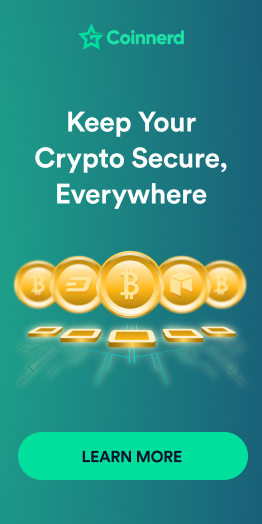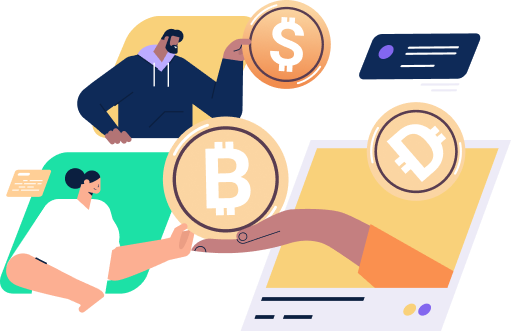How to Get Started in DeFi: A Beginner’s Guide to Decentralized Finance
Decentralized Finance or DeFi is gaining a lot of significance and momentum, especially in the past year, 2021. The major thing about DeFi is its ability to earn huge amounts in interest on the DAI, the popular stablecoin attached to it, and other cryptocurrencies.
Decentralized finance (Defi) is big at the moment, offering ICOs – initial coin offerings right from 2017. According to statistics in Defi pulse, In June 2020, over $1 billion in returns were locked in DeFi protocols, with over $20 billion worth of crypto being invested in the DeFi.
However, many people still have questions on what DeFi is and how they can benefit from it both short and long term. The knowledge on DeFi remains hidden among so many as well, preventing its widespread adoption. So, what is this thing, DeFi, how does it work, and how can you get started on it? Let’s have an in-depth knowledge of what DeFi is.
Decentralized Finance (DeFi) – How to DeFi and What It is
Decentralized finance is a payment system in the cryptocurrency industry that helps people send and receive cryptocurrency without having to use intermediaries. The idea of DeFi is built on the Bitcoin payment system, which is mostly peer-to-peer and the first of its kind in the cryptocurrency revolution.
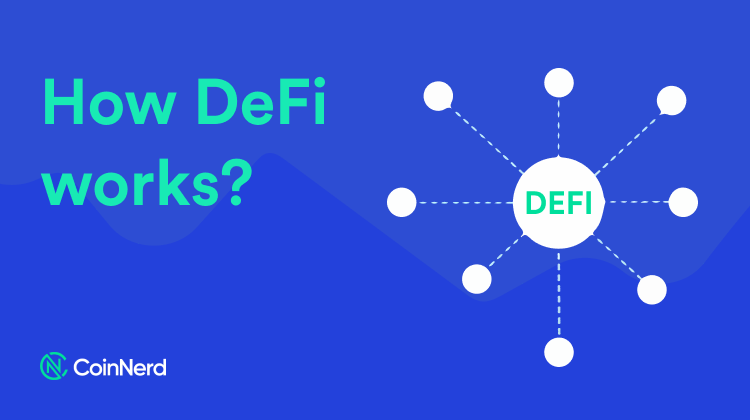
In most cases, the people who have built on DeFi or continue doing so seek to find possible solutions to bring down the barrier of entry to the people that use banks. Many cryptocurrency owners recently began using DeFi to make money rather than just store it for future use.
The cryptocurrency users have been able to access DeFi through collective DeFi apps, which are the financial products running on the public blockchain like the ETH chain. The products on these chains do not use any third-party agreements. Instead, they are automated through a protocol known as Smart Contract. We will be looking at what smart contracts are later in the article for an in-depth understanding.
How do Smart Contracts Work in DeFi
The smart contract protocol helps you get something like a loan without going to banks. You can get a loan and bet on derivatives like the recently introduced – Bitcoin Future through peer to peer. The protocol handles everything from swapping assets to facilitating the transactions with a small fee.
Defi applications appeared first on the ETH Chain, which Vitalik Buterin invented. Their expansion has reached other networks using smart contracts like Solana, Binance Smart Chain(BSC), and Avalanche. DeFi has a few key features that make it special among users globally. Here are some of them:
- It is open to everyone. DeFi uses applications by creating wallets without giving users personal information like name and address. Users find this simpler than having bank accounts with so many personal details to acquire one.
- Users can move their money/funds around almost instantaneously through blockchain technology. This reduces a lot of time that banks can waste while users wait for them to clear the transfers they have made.
- The rates on DeFi are much better than banks whose transactional costs are very high. This is because the transaction costs on DeFi mostly depend on the blockchain network that the user intends to use.
- In most cases, DeFi applications are compatible with money legos which again allows anyone to create, modify, link, or mix and match any existing DeFi product without asking for permission. However, this particular feature may be the biggest weakness that DeFi has to date. If the primary component DAI becomes so vulnerable or corrupted, the whole DeFi ecosystem will crash.
DeFi Products. How Can You Use Them?
DeFi has three major uses that you, as a beginner, can engage in and benefit from. As we mentioned earlier, the DeFi system uses decentralized applications or DApps. It is within the app that a user rip benefits from it. You can use DeFi applications in the following ways;
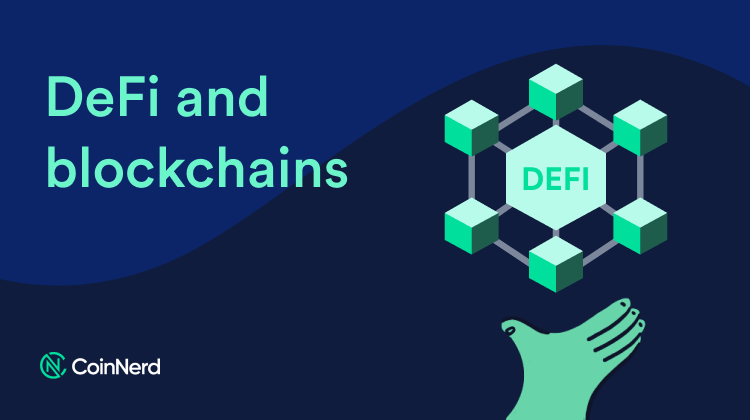
Trading
Decentralized exchanges have no negotiators. This helps the users trade directly with one another. Furthermore, DEXs like Uniswap and PancakeSwap always allow people to list new tokens for trading before entering the wider market. However, the fact that they are not vetted brings all the more risk. With centralized exchanges like Coinbase and Binance, the exchange takes control of your assets with each trade you make.
To Lend or Borrow
This is a very lucrative business for the users that own cryptocurrency within the DeFi. Users with crypto lend to the smart contract protocols like Aave or Compound, and in exchange, they earn some interest from their crypto.
Other users within the DeFi are there to borrow digital assets. The protocol will lend the borrower the crypto that the lender gave. And the funds will be divided according to profit share. However, care should be taken because most DeFi protocols always use collateral which means you must put up more than what you are borrowing.
When the crypto you are borrowing falls, the major thing they will do is take your collateral to shield against losses. Many users have found this an amazing money-making idea through yield farming.
Using derivatives.
Many times, users want to avoid being limited to trading only particular tokens. Therefore, they turn to derivative platforms like dYdX and the Synthetic, which allows them to trade more assets through spot trading.
Create DeFi Apps and Tokens
Any person with the knowledge and capabilities of writing the smart contract can also create DeFi applications. The creation of DeFi involves several tools for testing and the deployment of smart contracts. You can download Truffle and Ganache which are good tools for ETH smart contracts and even tokens.
The tokens are created to allow the protocol to use the blockchain network. For example, an ERC20 token on ETH, SPL token on Solana, and BEP20 on the Binance Smart Chain(BSC).
The tokens also allow the protocol to interact with the blockchain coin and promote their tokens too for decentralization. For example, ETH is needed on the ETH blockchain for paying transactions and SOL on the Solana chain.
These DeFi products can be used by going to the application’s website and connecting your DeFi crypto wallet like MetaMask on ETH, Solana, and Phantom blockchains. Personal Information is not needed when registering on these DeFi platforms.
Inside Smart Contracts – An In-Depth Look
Th DeFi decentralized applications or DApps work on smart contracts. The major function of these contracts is to let users interact with the blockchain simply. Since smart contracts can only be used in one form of transaction, the DAPP is used to merge many smart contracts to perform multiple transactions.
DApps are found the same way as the other applications on your iOS or Android stores. You need to browse and download the app and you are good to go. The apps perform a specific function as instructed by their creator.
Smart contracts act similarly but are now on top of a blockchain. Smart contracts are pieces of computer codes used to perform a set of instructions. They do not use intermediaries like other applications because the blockchain verifies and holds all records.
To explain this better, let’s give an example. If you need to buy a car online, you must follow a few steps. First, you will need a listing site with all types of cars you want. You need to communicate with sellers and a payment system to help you exchange your money to pay conveniently.
Lastly, you need to register the car ownership or exchange one with the authorities. With this procedure, it will take you time to believe that what you bought is yours and with the right papers in your hands. Now compare this to smart contracts.
With smart contracts, security is guaranteed because of cryptography that prevents people from altering the records. Transparency is also guaranteed where everyone can see it on the blockchain.
There is also no third party, and they are as accurate as ever because they do not rely on the grey areas of language. Instead of a bank or any other third party, smart contracts give you full control as a user to move your funds to where you want. This makes transactions so easy and so fast.
Smart contracts are created and fashioned to enforce the terms of the agreement in any form. The smart contracts functionality has objectivity and depends mainly on the underlying cryptographic ensuring secure operation, immutability, and transparency.
Getting Started With DeFi – A Guide for Beginners
As a beginner in crypto looking to start using DeFi, this step-by-step guide will help you achieve more.
You need a wallet
The wallet will help you move your funds with ease on the DeFi protocols. The crypto wallet should be installed on your browser, support ETH, and connect to DeFi protocols-smart contracts.
There are a few available wallets that you can use as a beginner, like MetaMask, Trust wallet, and a few others. MetaMask will suit you well and is the most common wallet used for status. It also connects with DeFi protocols easily.
- To own a MetaMask wallet, go to metamask.io and download the extension. To use the extension, you will need a good browser like brave or chrome.
- Once the download is over, open and create a new wallet; set a password, after which you will receive a new seed phrase of 12 random words, which you will copy aside and only use to recover your wallet.
Buy The Coins to Fund Your Wallet.
The coins must be the right ones for the DeFi protocol you intend to use. Ethereum is the best to use in these cases because of its value to its smart contracts. ETH can be bought on centralized exchanges like Binance and Coinbase. However, you need to ensure that your centralized exchange account is more secure because of scams. Once all these are set, then you are free to indulge in the DeFi world through;
- Lending out crypto to DeFi for a percentage in returns.
- Becoming a market maker. When you put your funds in a DEX like Uniswap, you stand an opportunity to earn on fees.
- Investing in their projects, both new and old
DeFi Exchanges to Know About
There are several DeFi exchanges that you can explore the DEX universe with. The DEXs only allow crypto investors to trade using liquidity solutions. However, you need to use trusted protocols like Uniswap SushiSwap and DODO.
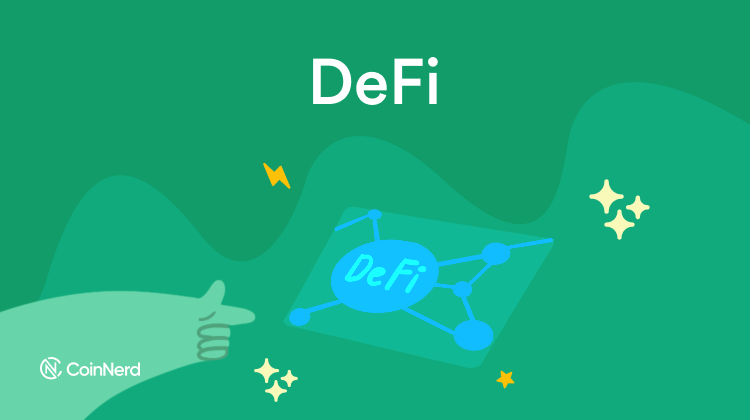
Uniswap is one of the best-decentralized crypto exchanges running on the Ethereum network or blockchain. The DEX allows everyone with a wallet to make the exchange tokens do so with no intermediaries. Uniswap users swap any ETH-built assets with underlying liquidity.
Sushiswap crypto also allows users to swap on different tokens. Sushiswap is an Automated market-making exchange running on the ETH blockchain. DODO is a liquidity platform supplying on-chain liquidity.
Other decentralized exchanges similar to Uniswap are Curve which is specially designed to be used with stable coins, Pancakeswap, which runs on Binance smart chain but with all similarities as Uniswap, and Burgerswap, which also runs on Binance smart chain. BurgerSwap also allows users to swap between tokens and earn rewards.
The Future of DeFi
DeFi has locked in a lot of money over the last 12 months. There was about $260 billion locked in DeFi protocols in the year 2021 with $19 billion coming from BSC alone. This trend is so good and shows that the DeFi analysts were right about the bright future the industry has. Despite some beliefs that DeFi cannot capture trillions in dollars of value, this is just the beginning of a huge strong DeFi move.
Despite all this, losses have been incurred in the long run but not compared to the money that has been amassed. According to statistics, about $10.5 billion was lost to hacks and scams, which is currently the biggest challenge DeFi faces. But as we move forward, it is expected that DeFi protocols will become more secure and reliable.
The SEC has also been contemplating regulating the DeFi industry to help users secure their money and prevent fraud, scams, and hacks that have been going on. According to experts, DeFi projects could fall under the purview of regulators in the near term. SEC argues that DeFi facilitates decentralization but in other aspects, it is highly centralized
But with everything said and done, the DeFi sector is still strong and has also begun gaining popularity. Soon traditional finance will be driving down the lane as DeFi will be taking over.
* We hope this information will help you in your investment process, but this is not investment advice. Every investment carries risk, especially in this industry, so DYOR before making a decision.





